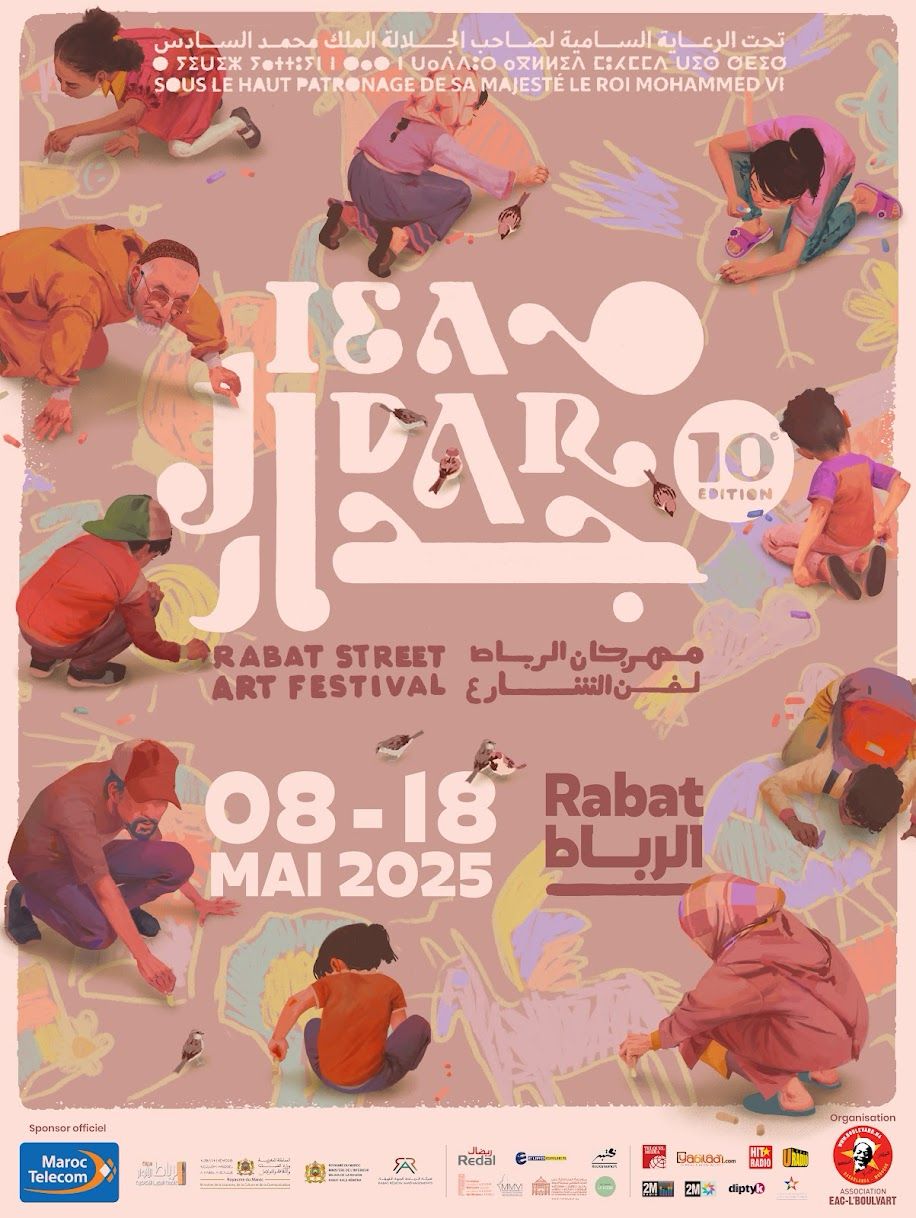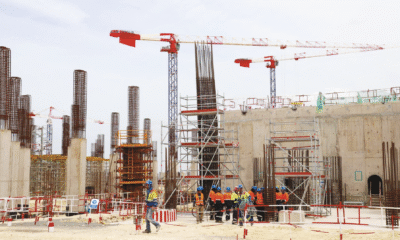Influences
Jidar: Ten years and still a wall-whisper of talent!
From May 8 to 18, it’s time to put on gloves, shake up the spray cans, and bombard the city’s walls with color for the 10th Jidar – Rabat Street Art Festival. What began as a clandestine rage, scratched in the shadows, has become a celebrated act. And that deserves a closer look.

Goodbye to grayness, welcome to a chromatic riot: for its 10th edition (May 8–18, 2025), Jidar covers the capital in XXL murals, from flowing Arabic calligraphy to expressive portraits and other artistic styles. In a decade, Morocco has flipped the script on street art: from subversive act to joyful manifesto, turning every alley into an open-air gallery. Rabat, long in Casablanca’s shadow, has found its voice—and it pops like a spray can on a raw wall.
Twenty years ago, Moroccan street art was an outlaw’s affair. In the 2000s, young artists like Rabie El Addouni braved the night to tag highways, bridges, and retaining walls. His 3D Latin lettering and sharp, identity-driven Arabic calligraphy were visual uppercuts in a Morocco where public art didn’t exist. In Casablanca, Mohamed El Bellaoui, aka Rebel Spirit, made his pop characters dance on weathered facades. Rebellious, fleeting, risky acts—it was still seen as vandalism.
The real shake-up came in 2013. In Casablanca, the EAC-L’Boulvart association launched Sbagha Bagha, a festival turning walls into canvases and graffiti artists into modern-day storytellers. That same year, the National Foundation of Museums opened the doors of the Mohammed VI Museum of Modern and Contemporary Art to urban works. The message was clear: street art is no longer a crime, it’s a treasure. Authorities, once seeing every tag as a threat, began to recognize its potential: street art can reshape the soul of cities.
Rabat, a giant canvas
Often seen as austere next to vibrant Casablanca, Rabat joined the movement in 2015 with Jidar. «The ambition was to make street art visible and accessible. Almost ten years later, it’s a reality: over 100 murals now cover Rabat’s walls, in every neighborhood. Created by leading national and international street artists, these murals are now an integral part of the urban landscape », say the organizers.
You’ll find locals like Majid Elbahar (Majic Joe) with his graphic explosions, or Imane Droby sketching moving Moroccan scenes, alongside Spain’s Okuda hypnotizing with geometric triangles, and Mexico’s Paola Delfín immortalizing the strength of market women. Every wall tells a story: reinvented zellige tiles, striking faces, abstractions electrifying the asphalt.
This year, ten new murals by eleven artists from eight countries will enrich this heritage. From Spain’s Ratur to Mexico’s Smithe, Croatia’s Lonac, Belgium’s Nean, Japan’s Kyosuke Shimogori, Ecuador’s Yankamata, and Moroccans Azhar and Masawi, these spray virtuosos will make Rabat’s walls sing. With Murfin and Demsky (Spain), and Iota (Belgium), every facade will become a visual explosion, an artistic shock blending cultures and imaginations.
In Yacoub El Mansour, a local vendor says, moved: «Before, these walls were dead. Now, they speak, they breathe». Residents, once wary of these colorful invasions, are now won over. Kids dream of spray cans, elders smile at these singing walls. Rabat is no longer just the city of ministries: strolling here means diving into a giant mural. Jidar sparked the flame with spray cans, and the fire isn’t going out anytime soon.












